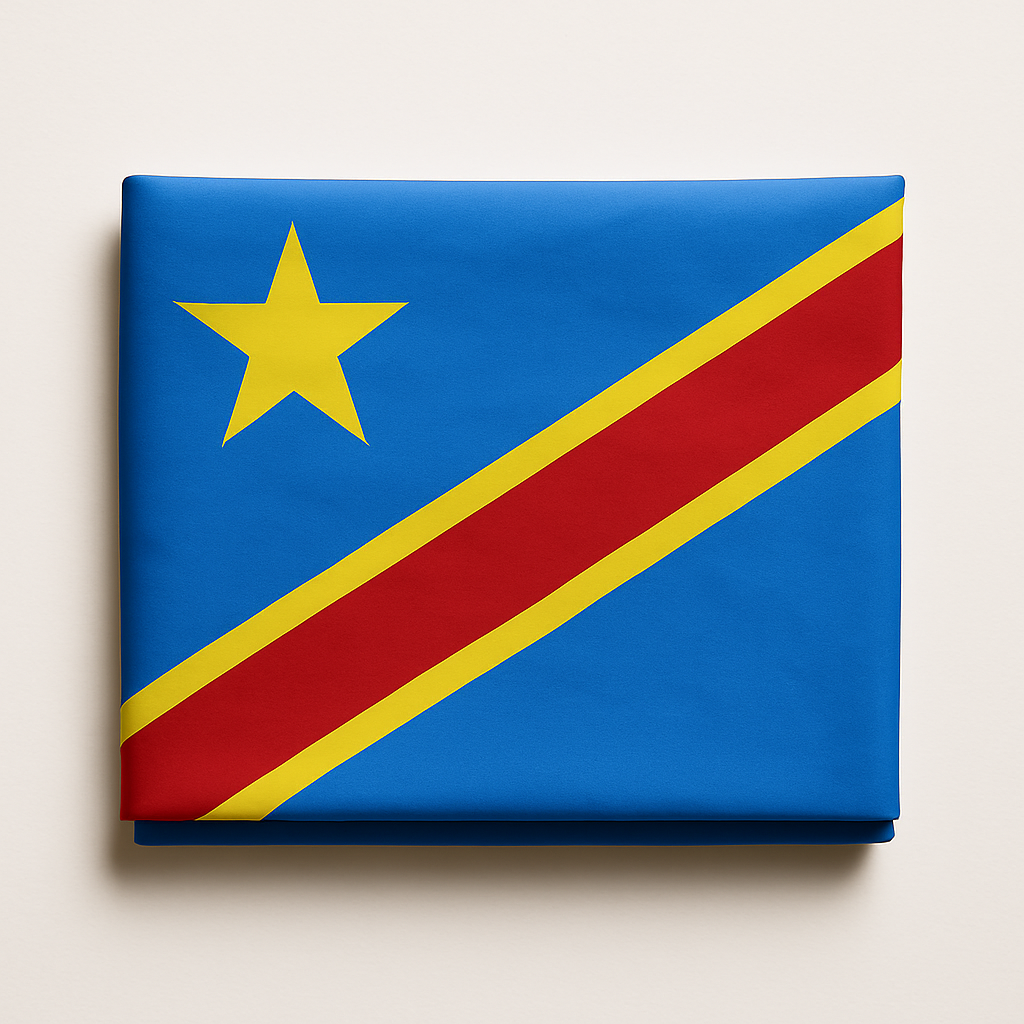Flag of the Democratic Republic of Congo
Flag of the Democratic Republic of Congo
 SATISFAIT OU REMBOURSÉ sous 30 jours
SATISFAIT OU REMBOURSÉ sous 30 jours
 REMISE EN MAIN PROPRE GRATUITE
REMISE EN MAIN PROPRE GRATUITE
Couldn't load pickup availability
The flag of the Democratic Republic of Congo, adopted in 2006, has important symbolic meanings linked to its colors.
Blue is interpreted as the color of serenity, evoking a calm and peaceful sky. It is also associated with peace and hope, reflecting a promising future for the country and symbolizing the unity of the people.
Red invariably represents the blood of martyrs shed for the homeland, recalling the sacrifice of those who fought for independence.
Yellow evokes the richness of the country's natural resources.
The history of the flag of the Democratic Republic of Congo dates back to its earliest days as an independent state.
The initial flag was dark blue with a yellow five-pointed star in the center, symbolizing the light of civilization that shone on Black Africa. This flag was used during the Congo Free State era, then during the Belgian Congo period.
After Congo's independence in June 1960, six additional stars were added to the left of the central star, representing the six provinces that made up the Belgian Congo at the time.
Beginning in 1963, with events such as the Katanga Rebellion, General Mobutu's coup d'état, and the country's name change (from Congo to Zaire), several different flags were used until the adoption of the current flag.
The flag of the Democratic Republic of Congo embodies the complex history and cultural richness of the country, while carrying deep meanings linked to peace, freedom and sacrifice for the homeland.

Vos questions, nos réponses
Pourquoi ne pas acheter sur Amazon ou AliExpress ?
Ici, vous recevez un produit vérifié, bien fini, prêt à l’emploi et remis en main propre si besoin. Pas de mauvaise surprise, pas d’attente inutile
Est-ce que les drapeaux comportent des œillets pour les accrocher ?
Non. Ce modèle est prévu uniquement pour être tenu à la main. Il ne comporte aucun œillet, ni système de fixation.
Et si je ne suis pas satisfait(e) ?
Nous restons disponibles après l’achat. En cas de souci, on trouve toujours une solution rapide.
Faites-vous des drapeaux personnalisés ?
Pas pour le moment. Mais pour des demandes spéciales, n’hésitez pas à nous écrire, on étudie chaque projet.

Parfait pour les événements en extérieur.

Couleurs vives, tissu solide.
Rapide, simple, sans frais de livraison


 Livraison entre le
Livraison entre le